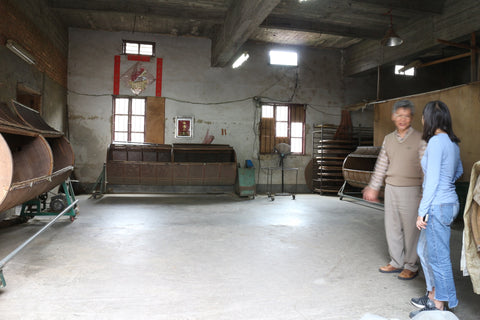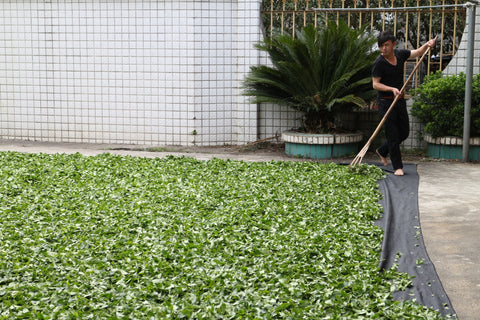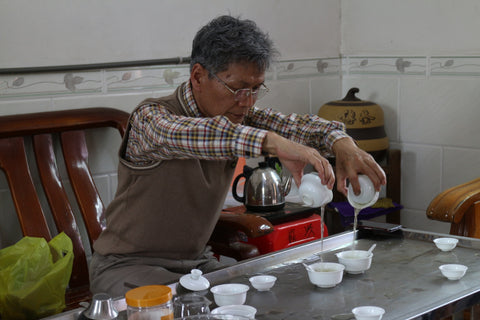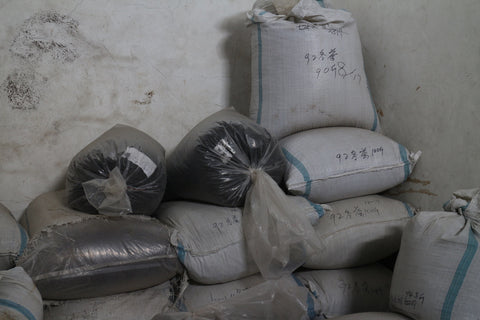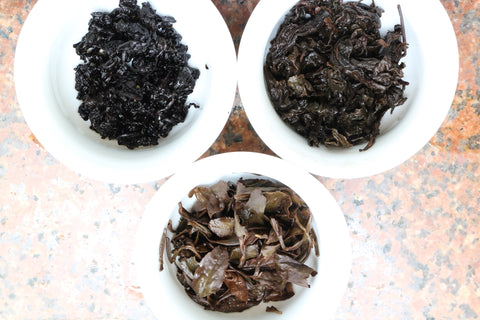The Taiwanese Tieguanyin Master
Anxi, 23 April 2018
Alone at last. After two days at Anxi, I finally manage to get together with Master Chen unaccompanied. Even before coming to Anxi, I knew it would be an important meeting. But only after first speaking with him did I realise what a unique and unrepeatable opportunity this was.
Mister Chen is a calm and cheerful person. Not loquacious, but when he speaks of tea, his tone is certain, yet modest, seeking neither confirmation nor approval; when he speaks of tea, his eyes shine, revealing a profound passion.
The Story of Master Chen
In the eighties, he lived in Taiwan, his native country, where he cultivated a passion for tea. He became part of a small circle of people, disciples more or less under the direction of Wu Zhenduo, the father of Taiwanese tea (to learn more, read the never-before-written history of oolong tea in Taiwan).
At the start of the nineties, he decided to turn his passion into a profession. At that time in Taiwan, land prices were very expensive. But in China, those were the years of massive privatisation, and it was easy and inexpensive to buy, or even better to receive in concession, large holdings to cultivate.
Mr. Chen chose a village near Longjuan, in Fujian, the native province of oolong tea. In the surrounding mountain peaks he bought vast plots of land, built a small structure for processing the leaves, brought his machines from Taiwan, and in 1992, produced his first Anxi Tieguanyin.

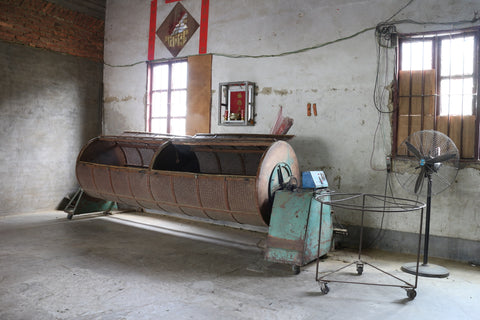
Master Chen shows us the rooms where he produces tea. Some of the machines he brought personally from Taiwan in the early nineties are still operational.
Outside, a boy spreads freshly-picked leaves of Ben Shan on a mat to let them wilt in the open air.
Tieguanyin and Formosa Oolong
Tieguanyin, as we know it today, is a tea with barely oxidised leaves; the browned edges are removed before the leaves are dried. The infusion is a vibrant green colour, the flavour fresh and lightly floral, yet often tart.
The conversion to green Tieguanyin is tied to the popularity of green tea in China. The average Chinese person associates Tieguanyin with a particularly aromatic and floral green tea. With the growing popularity of green Tieguanyin, and the resulting increase in price, many producers have adapted their production methods to market demands, compromising to increase productivity.
While the local Anxi producers are moving away from traditional methods perfected over the centuries, Mr. Chen continues to optimise the very methods popularised by Wu Zhenduo in the post-war period.
He has searched for the perfect compromise between the mainstream Tieguanyin (with a bright green infusion) and the characteristic flavour of the oolong, intensely aromatic and sweet. He never accepted the sour flavour spreading in China, but remained faithful to the characteristics that made Taiwanese oolongs the favourite teas of many connoisseurs.
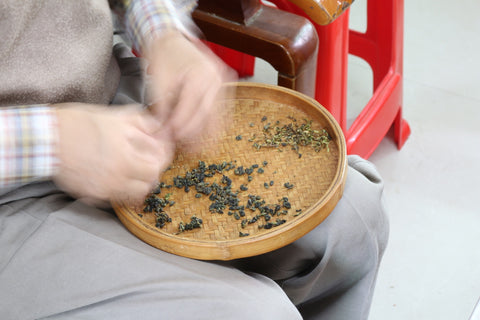
Master Chen separates the leaves of two Tieguanyins produced in the preceding days and prepares them for us (I am accompanied by Spencer). During the process, he explains how his teas differ from those of mainstream Tieguanyin.
We think along the same lines: I have never enjoyed the acerbic, 'unripe' taste of modern Tieguanyin, refusing to believe that such a beloved tea could always have been so 'unbalanced' in flavour. Spencer is enlivened by the words of the Master, and even more so by the flavour of his teas. She is not an expert, but grew up in the north of Guangdong, where another famous oolong is produced, Phoenix Single Bush (Fenghuang Dancong), and, moreover, frequently drank Tieguanyin in those days. Her reaction while drinking Mr. Chen's teas confirms my thoughts.
Mr. Chen's wife, who has joined us in the meantime, teases her husband, saying she knows how to make tea, but doesn't understand the business in the slightest. After all, the Master is bound to tea by passion and is an experimentalist by nature.
During the tasting, the couple reveals other details. So I come to learn that the extensive and well-tended gardens of the cooperative that we visited yesterday are all Mr. Chen's property. He gave the management of them over to the cooperative, receiving in exchange rent, probably token, and a share in the company. And, of course, the discretion to use the leaves from the garden to produce tea and continue to experiment.
Vintage Tieguanyin
We taste various teas, both Qing Xiang, a bright, light, and floral tea, as well as Nong Xiang, with a more intense colour and flavour.
I can't refrain from asking the master if he has any aged teas, and now, once more, his eyes twinkle. After a few minutes we are in a dark room and, by the light of a torch, observe the white sacks full of tea which surround us. On each sack are two digits, the year of production.

Master Chen surrounded by sacks of tea. The oldest teas date back to 1992, the year he first started producing in Anxi.
I am ecstatic. Aged Tieguanyin is a rarity and incredibly expensive. Years ago, I managed to acquire a small batch from 1993; a tea which, alas, remained available from Nannuoshan for only a short time before selling out. Now I am literally surrounded by tea twenty years old!
Master Chen points out that not all of the sacks contain tea worth drinking. For example, those produced in the first years are, in his opinion, low-quality. I ask if we can taste some side-by-side. He selects three that he considers to be among the best vintages.
- Tieguanyin 1995. "High fire", that is, treated at high temperature.
- A blend of two cultivars, Tieguanyin and Ben Shan 1997, dried at low temperature.
- Tieguanyin 2000. "Very high fire": treated at high temperatures and toasted.

Three vintage Tieguanyins (1995, 1997, 2000). The color of the infusion and the leaves reveals the type of processing.
All three are simply exceptional teas. They have an intensity and a body matured over the course of the years, and yet, each has a unique character. The '95 is very soft on the palate; the 2000 is extremely intense without being excessive; the '97 is more structured and complex.
The best news: he allows me to purchase all three teas, and the prices are more than acceptable. For the 1993 Tieguanyin, I had paid more than double.
So I buy all three aged teas and, naturally, some of those produced this year and the year before. In addition, Master Chen will produce some tea exclusively for Nannuoshan in the next few days, according to the following characteristics discussed in the afternoon:
- Maximising complexity and floral flavour
- Avoiding the removal of the oxidised edges of the leaves
- Removing all traces of acerbidity
Late in the evening, Spencer and I bid the master and his wife farewell; we return to town, where, tomorrow, we have an appointment with a third producer.
Even tomorrow will not be devoid of surprises, such as the tasting of white and black tea produced in Anxi from the same cultivars used for Tieguanyin.
After Anxi I will head even further south, to Guangdong, in search of new black teas and Hei Cha, post-fermented tea.
Written by Gabriele


